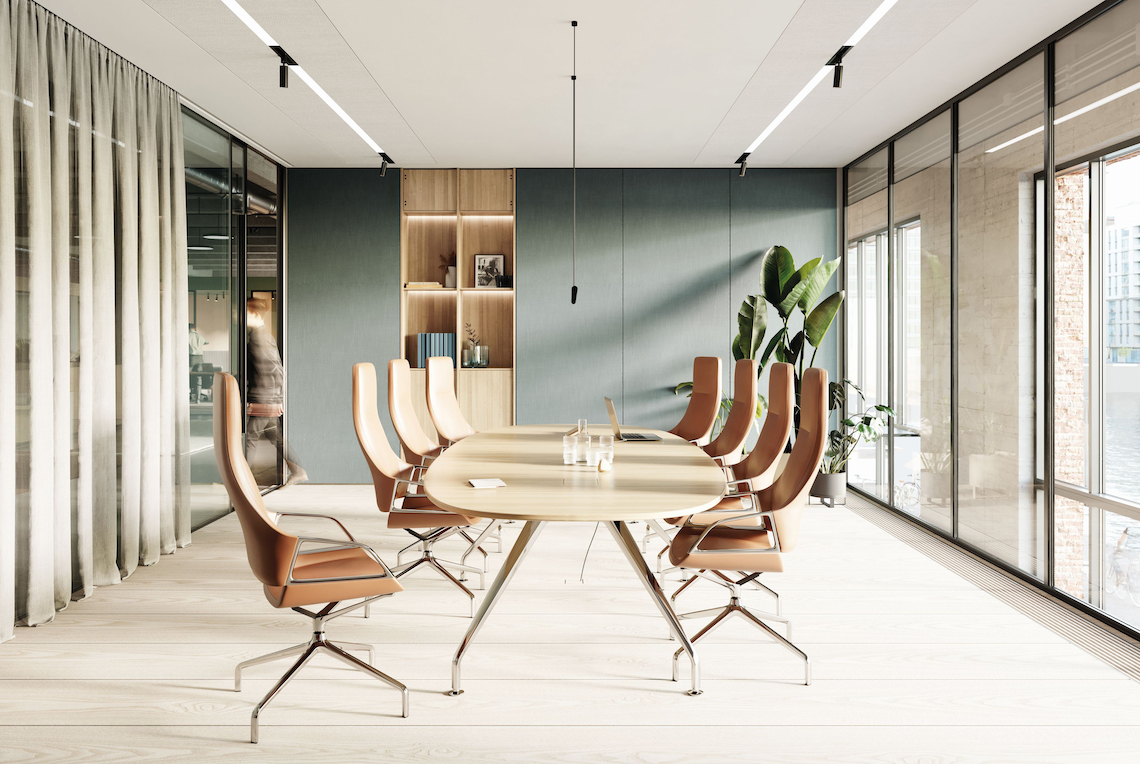
Meeting up in person with colleagues is what remote workers seem to miss the most. Digital formats struggle to convey a mood or feeling that everyone’s part of a community. There’s a good reason why communication researchers consider people meeting in the flesh to be the most complex yet most effective form of human interaction. Because it boosts engagement or empathy, appeals to many of the senses and misunderstandings are easier to rule out. And alongside official meetings, it’s those spur-of-the-moment encounters with people from other departments that are becoming an increasingly important way of finding new ideas and questioning old ones. Encouraging people to talk to one another and the potential involved are probably the key reasons why working in the office will still be essential in the future.
The word meeting tends to conjure up an image of formal events like conferences or discourses on a particular date, all of which usually have agendas. Where work styles are agile and change constantly, spaces geared to these routines are vital because they provide structure and points of reference to attendees. Which is why the human-centered workplace offers both versatile and single-purpose spaces. In this case, the design of the conference room symbolises an open and approachable type of corporate culture. The contemporary, transparent design of the Graph chairs and the rounded shape of the Graph table also help drive this message home. This design concept offers well-being, purpose, corporate identity and superior collaborative options.
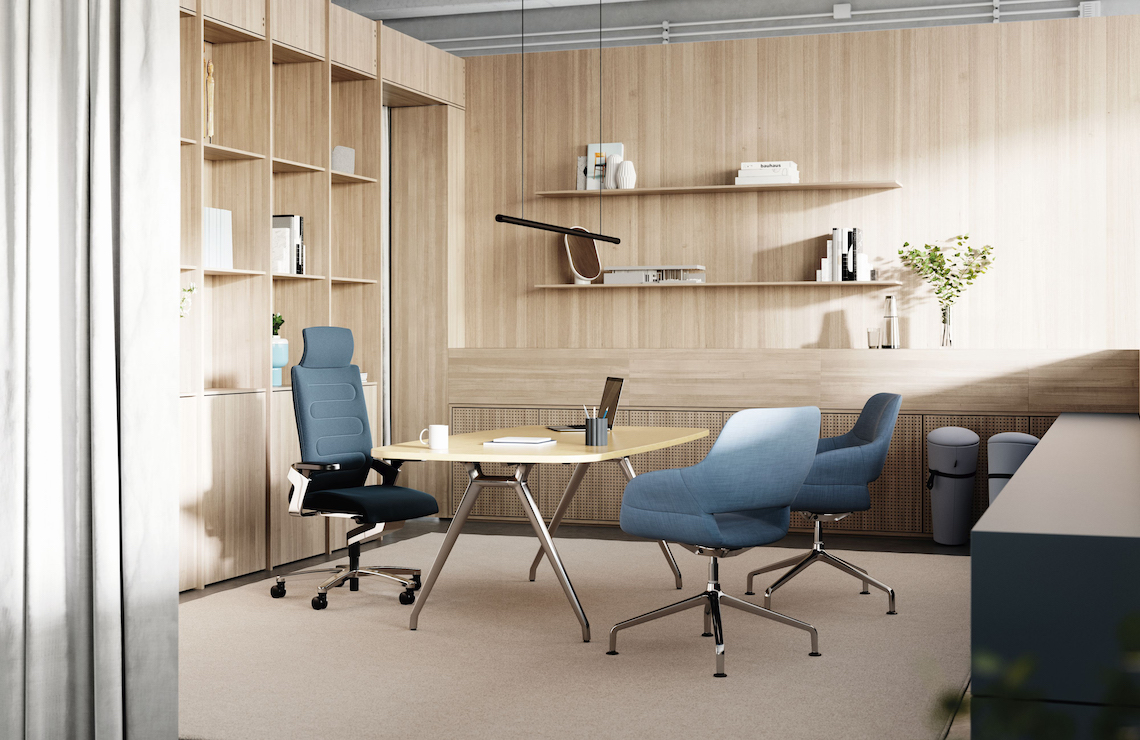
Even in offices dedicated to meetings, special curtains to dull sound help partition off part of the room so that a small number of people can get together for a discussion. In order to underscore the feeling that everybody’s part of one team, whatever their position in the hierarchy, the choice of materials and colours is based on the overarching design concept. The Occo conference seating is a good match with the ON office chairs and shows that meeting attendees are valued. Both models encourage users to keep fit by moving, which is an integral component of the furniture concept as a whole.
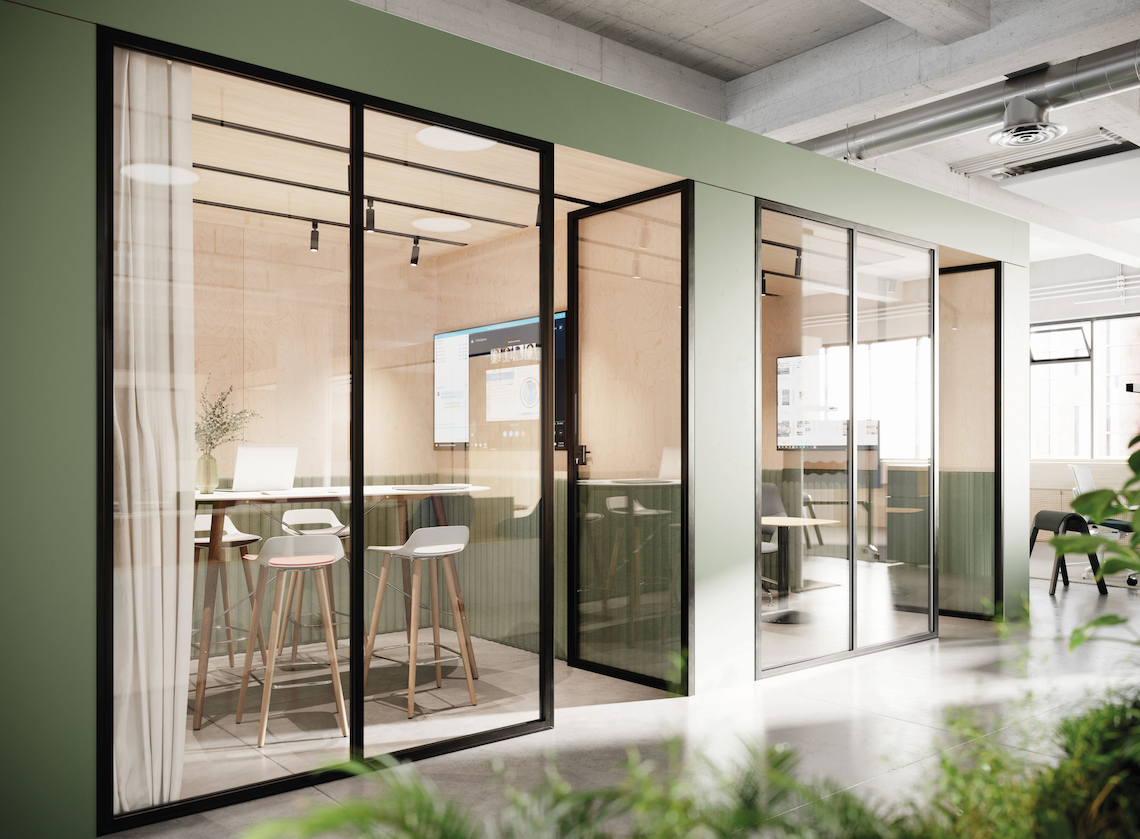
The pods in the space can be reserved and are equally ideal for planned meetings where further attendees join remotely. In future, it’s clear that spaces for both face-to-face and virtual meetings will become even more important. If necessary, these areas can be screened off to offer acoustic and visual privacy. Occo high tables and Occo bar stools are also ideal for meetings requiring a more relaxed touch and greater engagement. These also prompt people to change posture, which is much healthier. The colours and materials chosen have a natural, emotive appeal, which is becoming more and more significant in an increasingly technology-driven, abstract working environment.
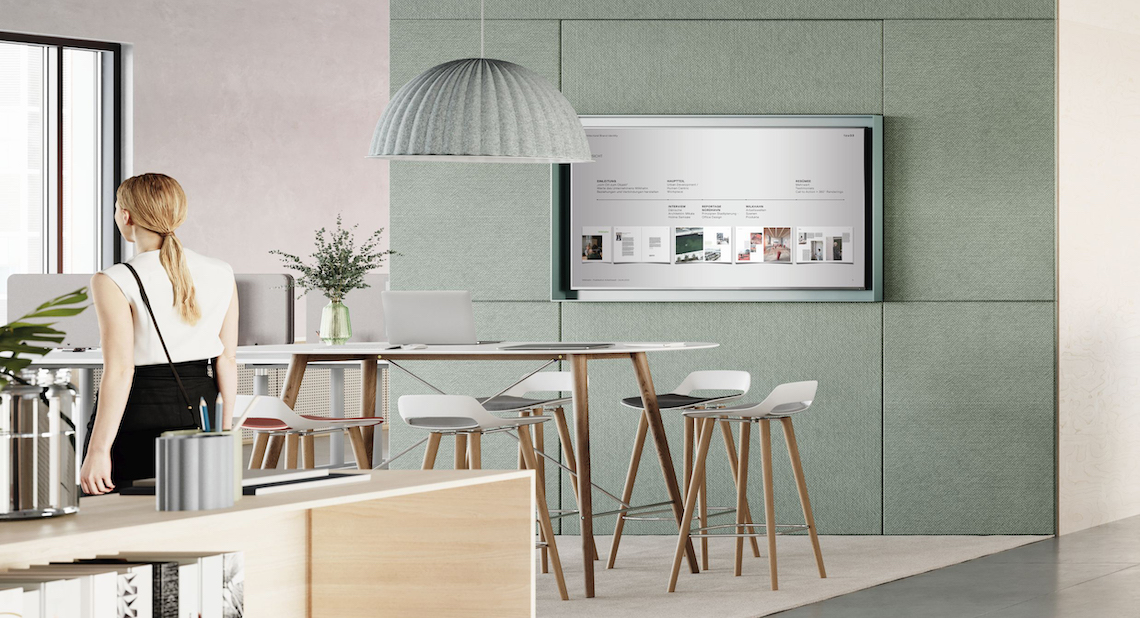
With the same Occo furniture, the open-plan meeting zones are equally informal and perfect for brief stand-up project or departmental meetings where neither visual nor acoustic privacy are required. Making these areas part of an open office fosters transparency and understanding across departments and allows spontaneous chats without disturbing others.
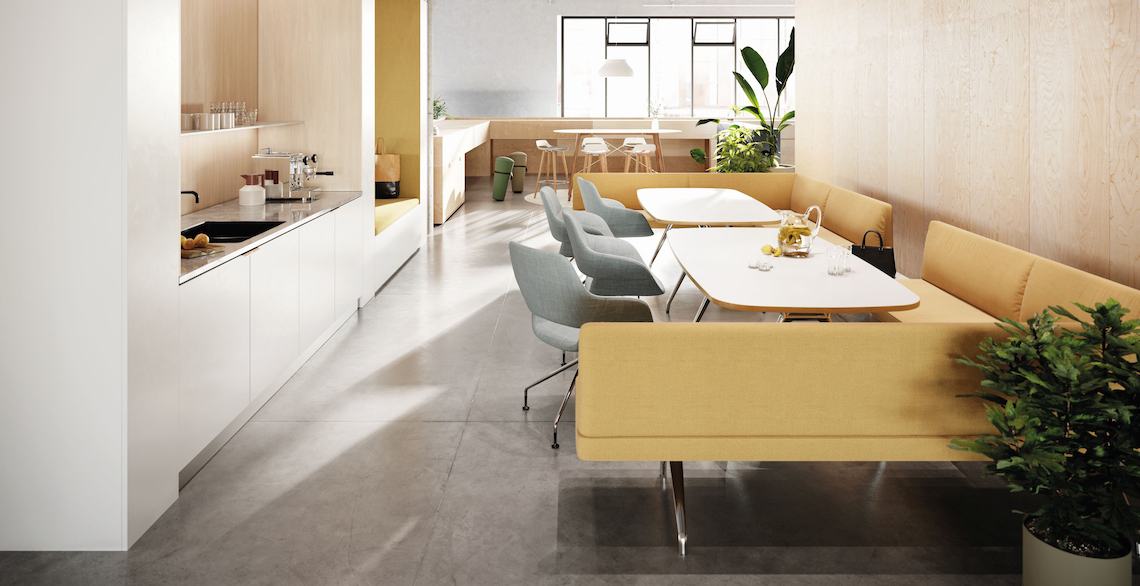
An in-house kitchen doubles as a venue for planned and unplanned interaction where people arrange to meet for a bite to eat or a cup of coffee and others join them spontaneously. But these types of encounters are always informal and therefore exceptionally important for creating a team spirit and building trust. “Without communal eating, no human group can hold together,” commented Christopher Alexander in his famous book Pattern Language. Because eating and drinking are sociable activities that have always been part of our DNA. Strengthening relationships, just like food itself, is essential to health and cohesion and the Graph tables and Insit benches really do bring people together. And the Occo high table is a good choice for anyone who prefers to stand for a quick chat and snack. The wall-facing counter also allows people to be on their own, which is also crucial to creating a good balance in a healthy community.
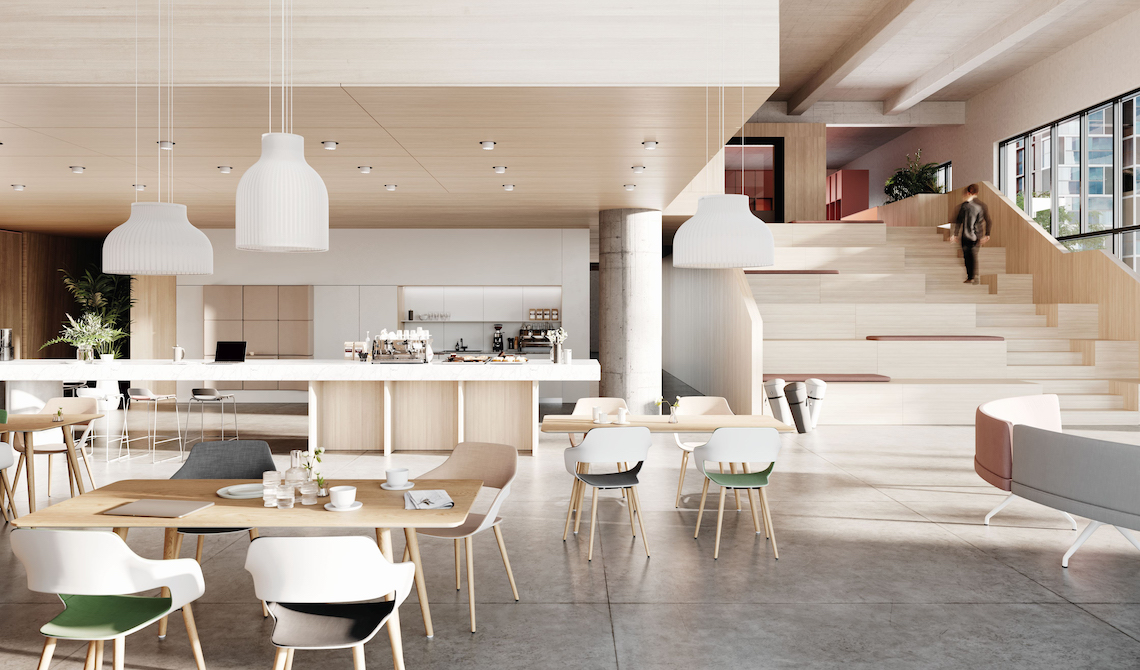
On the other hand, the public café on the ground floor is a place where guests can see and get to know new faces. These types of chance encounters broaden horizons and allow people to engage with others outside of their organisation. The café is a bright and cheerful venue where guests can take a seat on Occo chairs at Occo tables and chat to one another. To boost the work-life balance, employees are welcome to take a break here with their partners, children or friends.
The human-centered workplace offers a whole host of spaces for informal, planned or spontaneous interaction. An open-plan structure, a distinct range of colours and materials, as well as the emphasis on well-being and health are the overriding themes throughout. These express a future-facing culture that believes in human interaction as the key to achieving success and purpose.
For further information about this topic visit the website: www.wilkhahn.com
